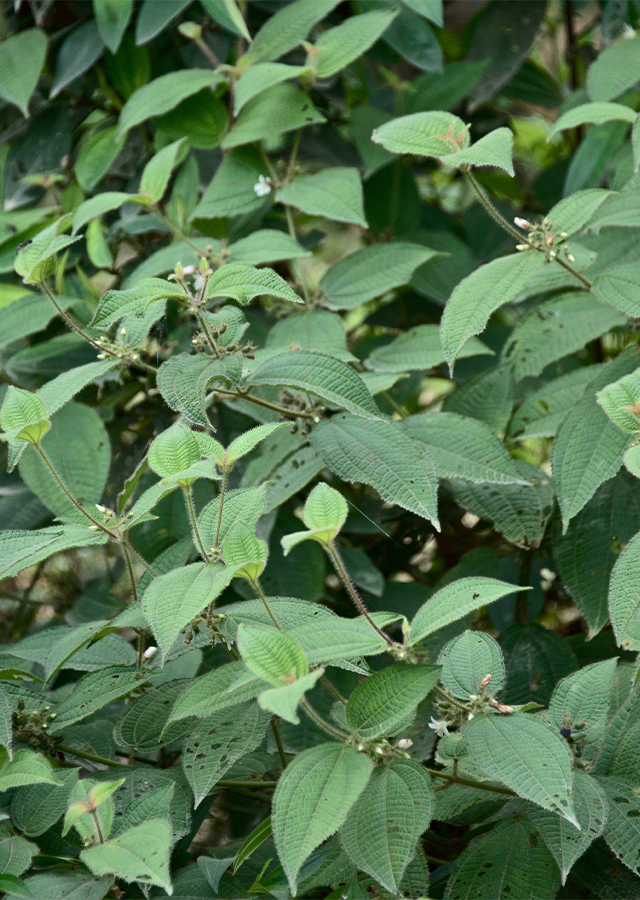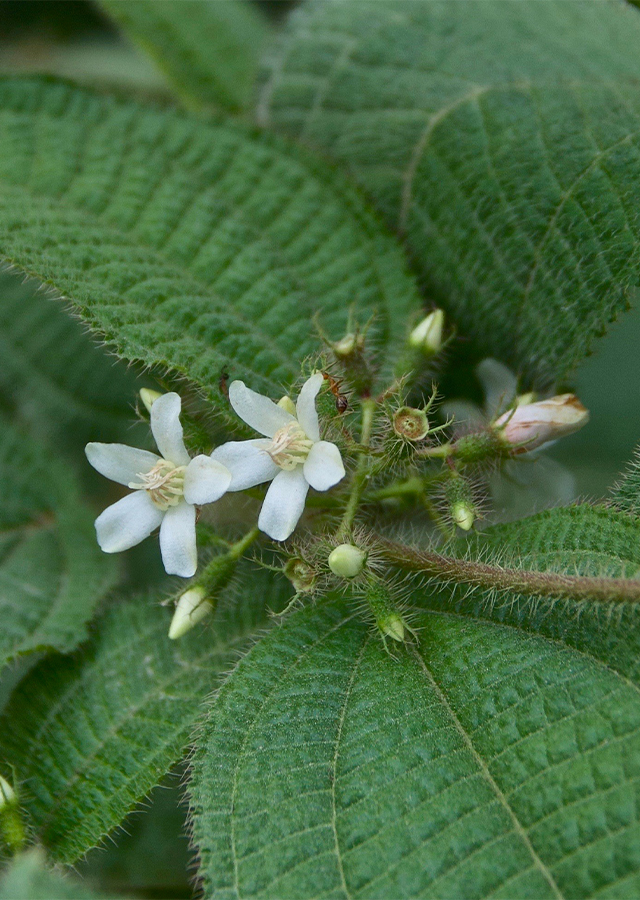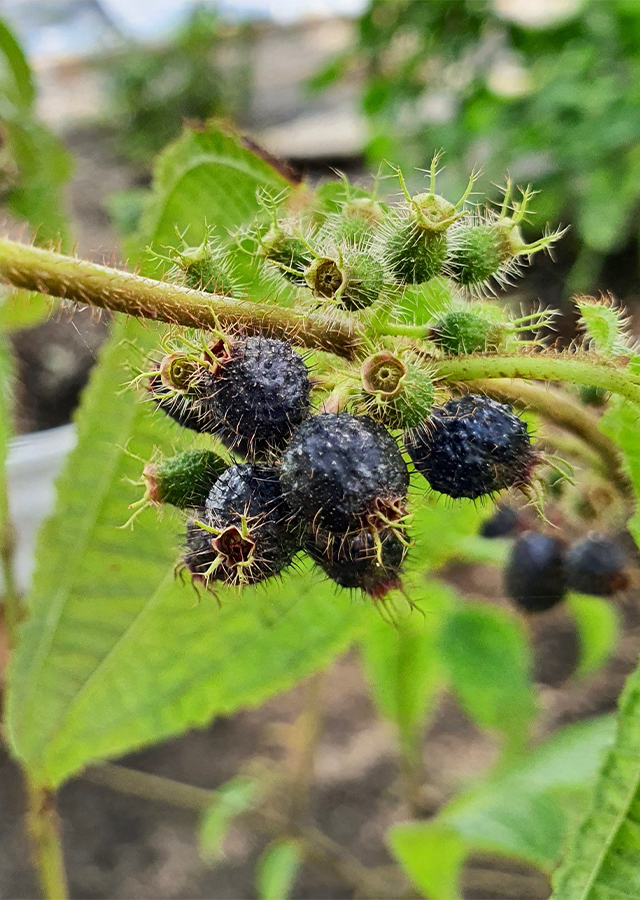Soapbush
Miconia crenata (Vahl) Michelang.
Melastomataceae
Location in our garden
Principal



Synonym
Clidemia benthamiana Miq.
Clidemia cognata Steud. ex Naudin
Clidemia crenata DC.
Habitus
Shrubs. A densely-branched perennial shrub up to 5 m tall but normally between 0.5 and 3 m.
Part Used
Leaves
Fruit
Roots
Growing Requirements
Full Sunshine
Need Shade
Habitat
Forest
Roadside
Shrublands
Grassland
Overview
Soapbush is one of the most common woody invasive plants in mesic to wet forests in Hawaii, introduced around 1940. It is still widely distributed on many tropical oceanic islands in South-East Asia, India, and East Africa. In tropical areas, this plant is cultivated for its edible fruit. Its also harvested from the wild for local use as food and medicine.
Vernacular Names
Hairy clidemia (Singapore), Caiuia (Brazil), Peria pantal (Malaysia),Ya zhou bin zao (Chinese), Vihoa (Hawaii), Kabatiti (Tagalog-Philippines)
Agroecology
It prefers humid tropical climates with annual rainfall over 1,200 mm. It grows in shade and full sun. It spreads quickly in disturbed areas including along roadsides and paths, edges of forests, fence lines, streambanks. Prefers moist but well-drained soil.
Morphology
- Roots - lateral and abundant, shallow, fine.
- Stem - round, covered with stiff brown or reddish hairs.
- Leaves - opposite, bright, shiny green on top, lighter green underneath, 5–14 cm long and 4–7 cm wide, oval-shaped with a pointed tip and finely toothed edges, prominently veined with five veins running long ways down the leaf and lots of visible cross-veins, covered with stiff hairs, in opposite pairs along the stem
- Flowers - white or pinkish with 5 petals, 0.5–1.5 cm in diameter, in clusters of 6–20 in the leaf forks or at the end of branches, present all year except in dry conditions.
- Fruits - a berry, reddish-purple ripening to dark purple, dark blue, or black when mature, 4–9 mm in diameter, covered in stiff, reddish-brown hairs, filled with up to 800 seeds 0.5–0.6 mm long.
- Seeds: obovate shape, bears an aril, 0.5 mm long.
Cultivation
Propagated by seeds. Most seeds are dispersed by birds that eat the fruit.
Chemical Constituents
Alkaloid, flavonoid, triterpene, steroid, glycoside, anthraquinone, saponin, tannin, phenols
Traditional Medicinal Uses
- Studies have shown antibacterial, antioxidant, astringent, and antispasmodic.
- Decoction of leaves is used to alleviate skin irritation, treat various skin diseases, and cicatrize old wounds.
- A decoction of the leafy branches is taken to reduce excessive menstrual flow. An infusion is used to treat stomachache and is also taken as an enema.
- Decoction of fruit is used as an abortifacient.
- Macerated in cold water, the leaves are used to make a woman's antiseptic genital bath to remedy hemorrhaging.
- In Polynesia, used as tonic and cicatrizant for wounds.
- In India, the juice is used as a tonic.
- In Brazil, this plant used to treat Leishmania braziliensis skin infections.
Part Used
Reference Sources
BioNET-EAFRINET. https://keys.lucidcentral.org/keys/v3/eafrinet/weeds/key/weeds/Media/Html/Clidemia_hirta_(Kosters_Curse).htm. (Accesed 17-12-2021)
CABI. 2019. Invasive Species Compendium (Clidemia hirta). https://www.cabi.org/isc/datasheet/13934. (Accessed 17-12-2021)
Pratami, M.P., Fendiyanto, M.H., Satriyo, R.D., Widana, I.D.K.K., Nikmah, I.A., Sari, N.I.P., Awwanah, M.O., Farah, D., and Darmadi, D. 2021. Potential of invasive alien species Clidemia hirta as an antibacterial against Salmonella typhi and Staphylococcus aureus. Biodiversitas, 22(6): 3363-3369
Tropical Plants Database, Ken Fern. tropical.theferns.info. 2021-12-17.
Weed Identification and Knowledge in the Tropical and Mediterranean areas. https://portal.wiktrop.org/species/show/66. (Accessed 17-12-2021)


